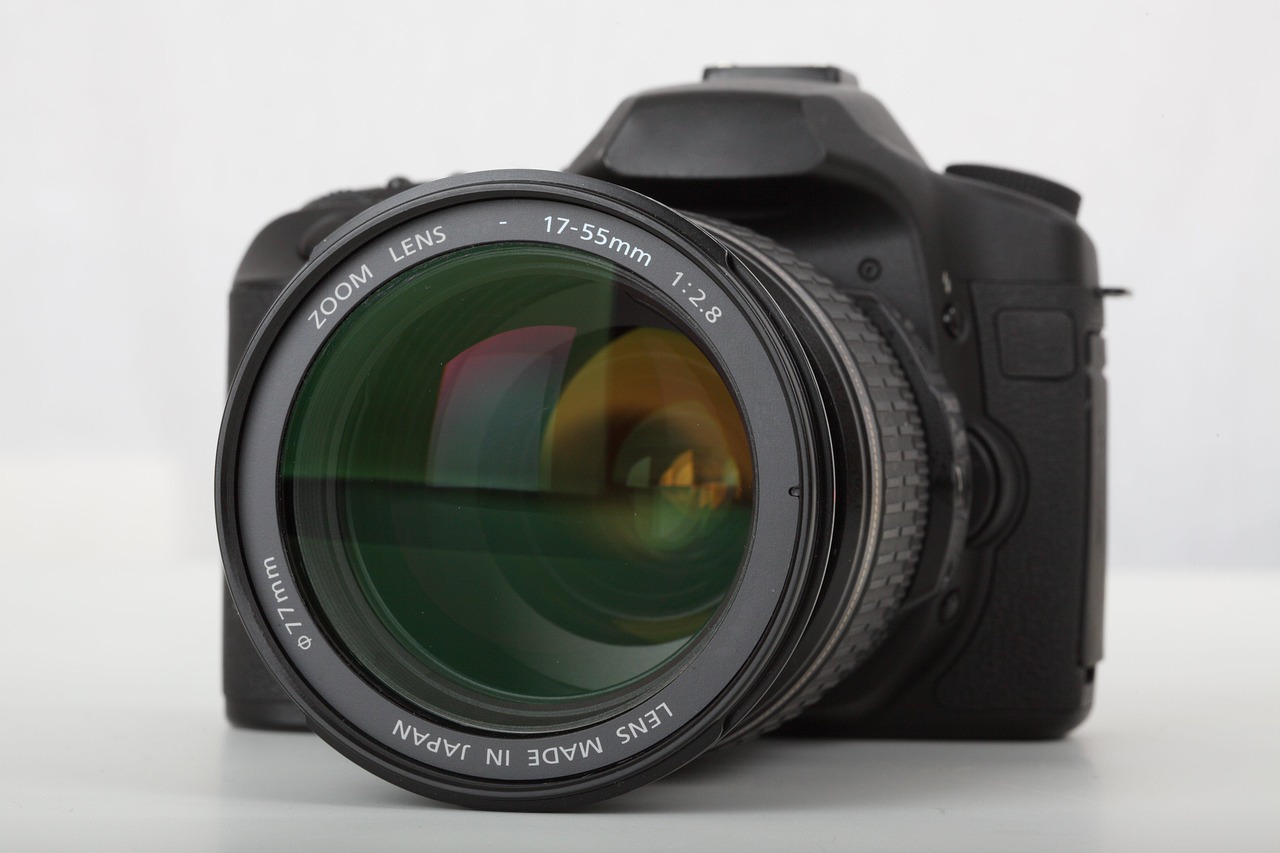This article provides an in-depth comparison of Sony’s latest action camera and GoPro’s offerings, analyzing features, performance, and user experience to determine which brand stands out in the competitive market of 2025.
Sony’s latest action cam is designed with innovative features that cater to both casual users and professionals. Key specifications include:
- Advanced Stabilization: Utilizing advanced algorithms, Sony’s stabilization technology minimizes shake and enhances video smoothness.
- High-Resolution Video: Capable of recording in 4K at 60fps, it captures stunning detail, making it ideal for action-packed adventures.
- Low-Light Performance: Enhanced sensors allow for better performance in dimly lit environments, ensuring clarity and color accuracy.
GoPro’s latest model, the Hero 11, continues to set industry standards with its impressive features:
- 5K Video Recording: This feature provides exceptional clarity and detail, perfect for capturing stunning landscapes.
- Improved Battery Life: Users can expect longer recording times, making it suitable for extended outdoor activities.
- Rugged Design: GoPro cameras are built to withstand harsh conditions, making them ideal for extreme sports enthusiasts.
Video quality remains a top priority for action camera users. When comparing the two brands:
- Resolution: Sony’s 4K video is highly detailed, while GoPro’s 5K option offers even sharper images.
- Frame Rates: Both brands support high frame rates, but Sony excels in slow-motion capabilities.
- Clarity: Users often report that Sony’s low-light performance gives it an edge in challenging lighting conditions.
Stabilization is crucial for action cameras. Sony employs Optical SteadyShot technology, while GoPro uses HyperSmooth. Both are effective, but:
- Sony’s technology is often praised for its smoothness during high-impact activities.
- GoPro’s HyperSmooth has improved significantly, making it a strong competitor.
Low-light conditions can be challenging for action cameras. In this regard:
- Sony: Known for its superior low-light capabilities, it reduces noise and maintains color accuracy.
- GoPro: While improved, it still struggles in very dim environments compared to Sony.
Battery life can significantly affect user experience. Comparing the two:
- Sony’s: Offers up to 120 minutes of continuous recording.
- GoPro’s: Can last up to 150 minutes, making it the better choice for long adventures.
User experience is essential for action cameras. Both brands have made strides in interface design:
- Sony: Features a straightforward menu system, but some users find it slightly less intuitive.
- GoPro: Known for its user-friendly touchscreen interface, making navigation a breeze.
App integration enhances functionality significantly. Both brands offer mobile apps that:
- Editing Tools: Allow for easy video editing and sharing.
- Remote Control: Users can control their cameras from their smartphones.
Accessories can expand the usability of action cameras. When comparing:
- Sony: Offers a variety of mounts, but the selection is not as extensive as GoPro’s.
- GoPro: Known for its wide range of accessories and compatibility with various mounts.
User reviews often highlight:
- Sony: Praised for video quality and stabilization.
- GoPro: Valued for ease of use and battery life.
Price is a significant factor in purchasing decisions. As of 2025:
- Sony’s Latest Model: Priced competitively with a focus on video quality.
- GoPro’s Latest Model: Slightly higher price point but offers excellent battery life and features.
As technology evolves, so do action cameras. Emerging trends include:
- AI Integration: Enhancing video editing and stabilization.
- Enhanced Connectivity: Improving sharing capabilities and remote control features.
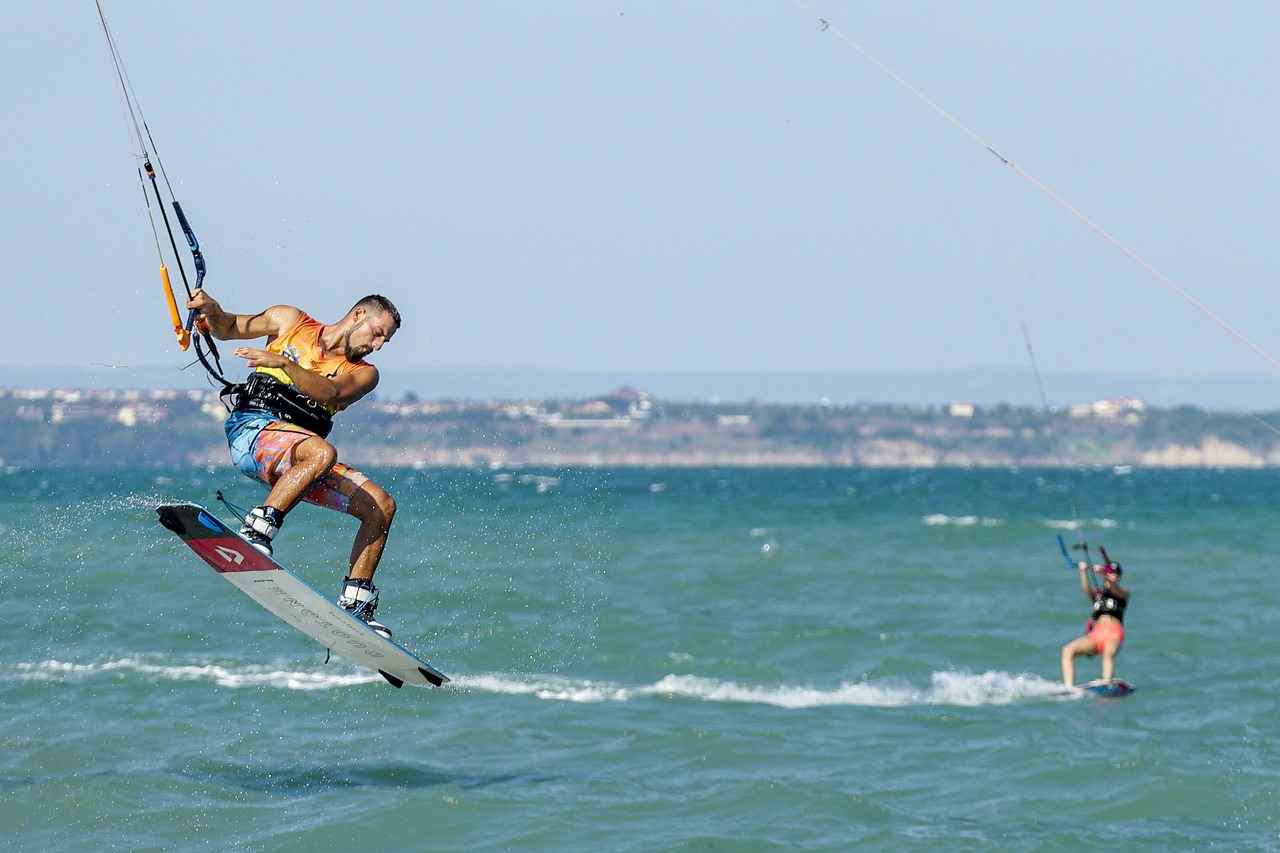
What Are the Key Features of Sony’s Latest Action Cam?
Sony has once again raised the bar in the action camera market with its latest model, which offers a range of cutting-edge features designed for both amateur and professional videographers. This article dives deep into the key specifications of Sony’s latest action cam, highlighting how they enhance user experience and performance across various activities.
Sony’s latest action cam is packed with impressive specifications that cater to a wide range of filming needs. Here are some of the standout features:
- Advanced Stabilization: One of the most notable features is its advanced stabilization technology, which ensures smooth and steady footage even in the most challenging conditions. This is particularly beneficial for extreme sports enthusiasts who require clarity and precision in their recordings.
- High-Resolution Video Capabilities: The camera supports 4K video recording at high frame rates, allowing users to capture stunningly detailed footage. This high resolution is essential for those looking to create professional-quality videos.
- Enhanced Low-Light Performance: Sony has improved its low-light capabilities, making it easier to shoot in dim environments without compromising on quality. This feature is crucial for night-time adventures or indoor activities where lighting may be suboptimal.
- Durability and Waterproofing: The action cam is designed to withstand harsh conditions, making it waterproof and shock-resistant. This durability allows users to take their camera on a variety of adventures, from underwater diving to mountain biking.
- User-Friendly Interface: The camera features an intuitive interface with a responsive touchscreen, making it easy for users to navigate settings and access features quickly. This user-friendly design enhances the overall filming experience.
- Versatile Mounting Options: With a range of compatible mounts and accessories, users can easily attach the camera to helmets, bikes, or drones, expanding its usability across different activities.
Understanding these features is essential for users to determine the camera’s suitability for their specific filming needs. Whether you are an adventure seeker, a vlogger, or simply someone who enjoys capturing memories, knowing how each feature works can significantly enhance your shooting experience.
Furthermore, the integration of AI technology in the camera’s processing capabilities allows for real-time adjustments to settings based on the shooting environment. This means that users can focus more on capturing the moment rather than fiddling with technical settings.
In summary, Sony’s latest action cam is not just an upgrade; it represents a significant leap forward in action camera technology. With its combination of advanced features, durability, and user-centric design, it is poised to meet the diverse needs of users in various scenarios. As we continue to explore the competitive landscape of action cameras, it will be interesting to see how these features stack up against offerings from other brands like GoPro.
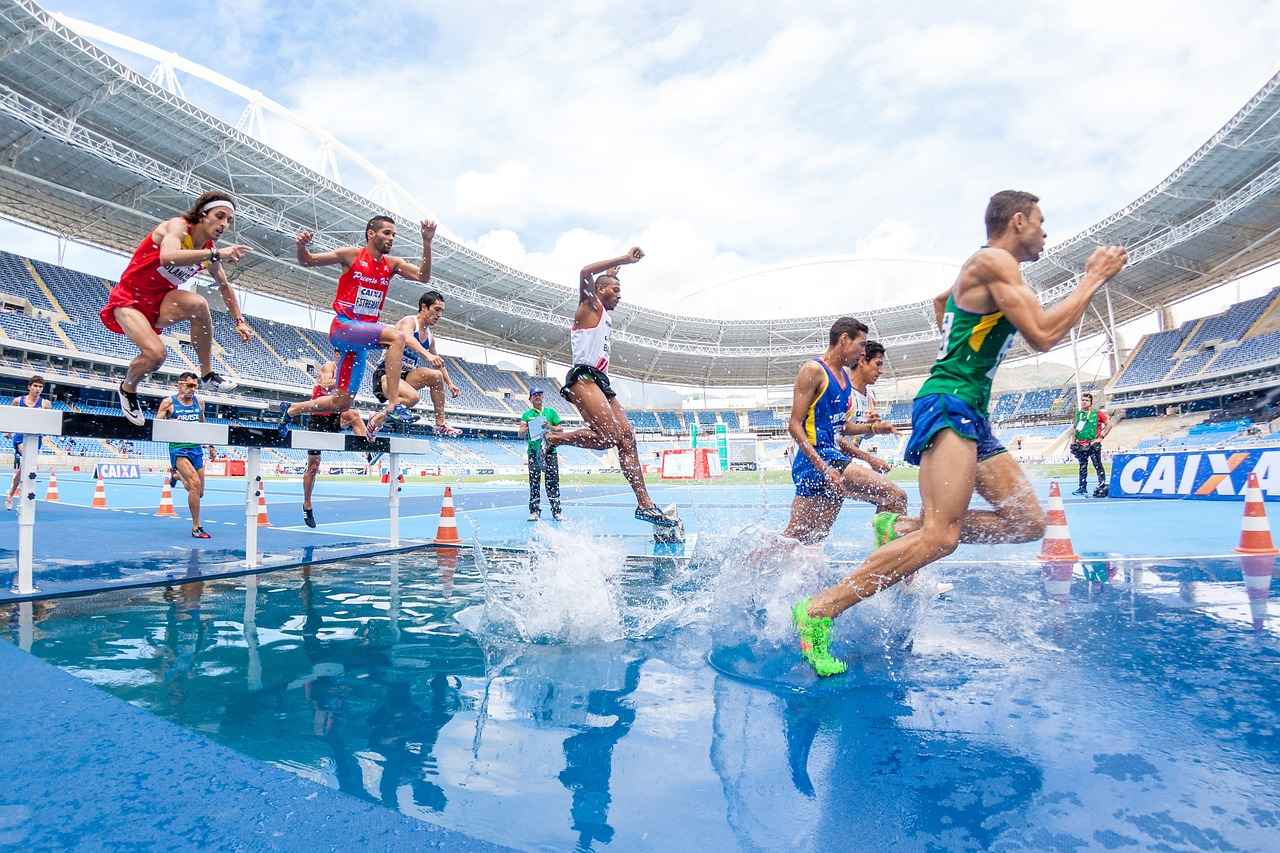
How Does GoPro Compare in Terms of Specifications?
In the ever-evolving world of action cameras, GoPro has consistently pushed the boundaries of technology. The latest model from GoPro continues this trend, featuring cutting-edge specifications that cater to both amateur and professional users. Among its standout features are 5K video recording capabilities and an impressive improvement in battery life, which will be explored in detail in this section.
The ability to record in 5K resolution is a game-changer for action cameras. This feature allows users to capture stunningly detailed footage, making it ideal for high-action sports and breathtaking landscapes. The increased resolution not only enhances clarity but also provides greater flexibility in post-production, allowing for cropping and editing without significant loss of quality. This is particularly beneficial for content creators looking to produce professional-grade videos.
Another noteworthy aspect of GoPro’s latest model is its enhanced battery life. Users can expect longer recording times, which is crucial for those engaging in extended activities like hiking, diving, or road trips. The improved battery performance is a result of advanced power management systems and energy-efficient components, ensuring that users can capture their adventures without frequent interruptions for charging.
When evaluating how GoPro’s specifications perform in real-world scenarios, it’s essential to consider various factors such as environmental conditions and user experience. In bright sunlight, the 5K video recording shines, delivering vibrant colors and sharp details. Conversely, in low-light situations, users may notice some noise, although the camera’s advanced algorithms work to minimize this issue.
The latest GoPro model also emphasizes user-friendliness, featuring an intuitive interface that simplifies navigation. The touchscreen is responsive, making it easy to switch between modes and settings quickly. Additionally, the camera offers voice control, allowing users to operate it hands-free, which is particularly useful during high-energy activities.
Connectivity is another critical area where GoPro excels. The camera comes equipped with built-in Wi-Fi and Bluetooth, enabling seamless integration with the GoPro app. This app enhances functionality by allowing users to edit videos, share content directly to social media, and even control the camera remotely. Such features are invaluable for content creators who want to streamline their workflow.
GoPro’s extensive range of accessories and mounts further enhances its appeal. From chest mounts to drone compatibility, users have a plethora of options to customize their setup. This versatility allows for creative shooting angles and unique perspectives, making GoPro a favorite among adventure enthusiasts and filmmakers alike.
When compared to competitors like Sony, GoPro’s specifications hold their ground, particularly in video quality and user experience. While Sony may offer advanced stabilization technology, GoPro’s 5K recording and improved battery life provide compelling reasons for users to choose their latest model. The overall package of features, along with user-friendly interfaces and extensive accessory options, positions GoPro as a leader in the action camera market.
In summary, GoPro’s latest model not only innovates with features like 5K video recording and enhanced battery life but also excels in user experience and connectivity. These specifications make it a formidable contender in the action camera landscape, appealing to a wide range of users from casual adventurers to professional content creators.
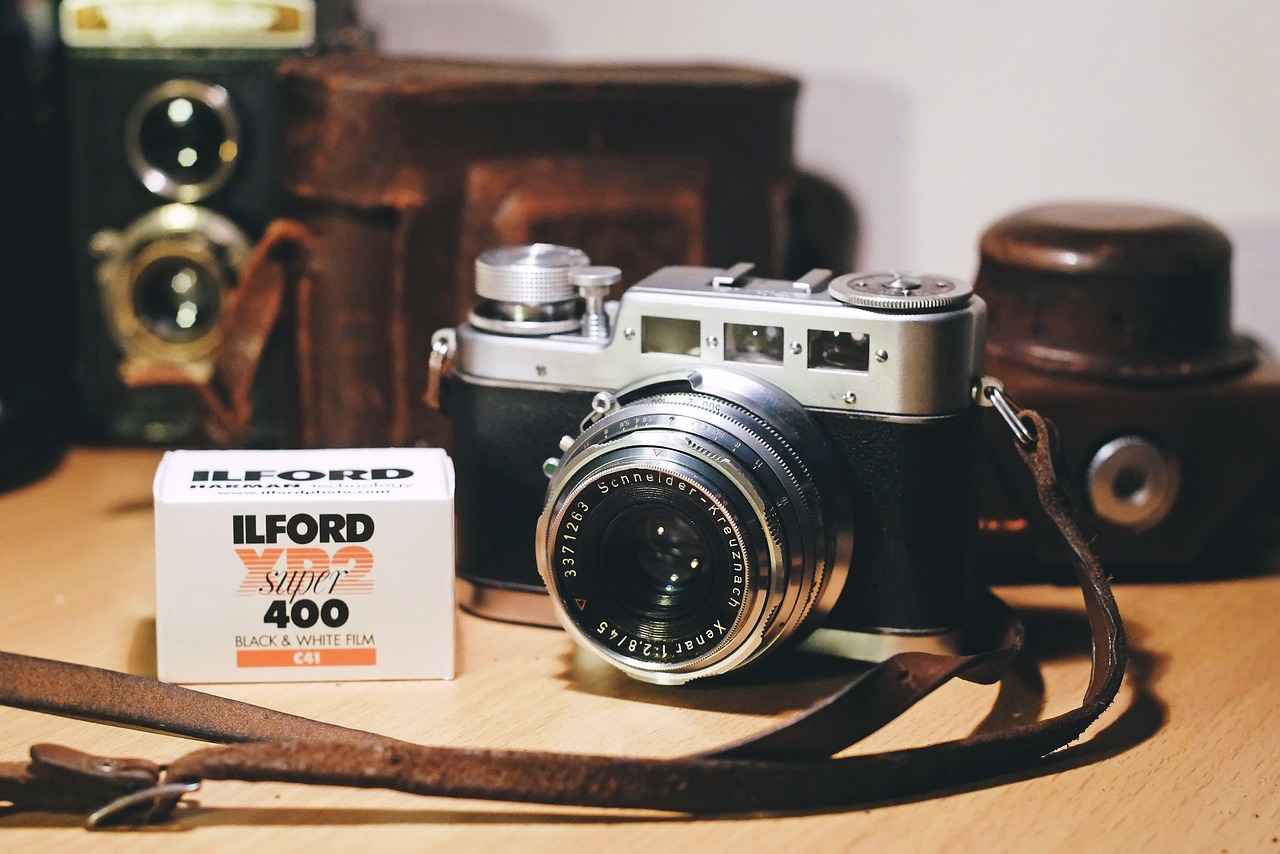
What Are the Performance Differences in Video Quality?
When it comes to capturing breathtaking moments, video quality reigns supreme for action cameras. As technology continues to evolve, both Sony and GoPro have made significant strides in enhancing their video capabilities. In this section, we will delve into the performance differences between the latest models from both brands, focusing on key aspects such as video resolution, frame rates, and overall clarity.
Video resolution is a fundamental aspect that determines the clarity of the footage. Sony’s latest action cam offers options up to 4K resolution, delivering stunning detail and vibrant colors. In contrast, GoPro has pushed the envelope with its latest model, supporting 5K video recording. This leap in resolution allows for even finer details, making it an excellent choice for those who prioritize image quality.
Frame rates play a crucial role in how smooth the video appears, especially during fast-paced activities. Sony’s action cam supports frame rates up to 120fps at 1080p and 60fps at 4K, ensuring smooth playback even in high-motion scenarios. GoPro, on the other hand, excels with its ability to capture 240fps at 1080p, making it ideal for slow-motion shots. This feature allows users to create dramatic effects, showcasing the action in a unique way.
When evaluating overall clarity, both brands have their strengths. Sony’s advanced image processing technology enhances low-light performance and reduces noise, resulting in clearer images in challenging conditions. GoPro’s recent models, however, are known for their impressive color accuracy and dynamic range, which provide a more vibrant and lifelike representation of scenes.
In real-world testing, both cameras have shown remarkable abilities, but user preferences may vary. For instance, a recent comparison video highlighted that while Sony performed better in dimly lit environments, GoPro’s superior resolution was evident in bright outdoor settings. This suggests that the choice between the two may depend on the specific shooting conditions and personal preferences.
Another aspect to consider is how well the footage holds up during post-processing. Users who edit their videos extensively may find that footage from GoPro retains more detail when color grading or cropping due to its higher resolution. Conversely, Sony’s footage may require less adjustment due to its natural color profiles and noise reduction capabilities.
Ultimately, the decision between Sony and GoPro regarding video quality comes down to individual needs and shooting styles. While GoPro offers higher resolution and frame rates for those seeking the utmost in detail and slow-motion capabilities, Sony excels in low-light performance and overall image clarity. Understanding these differences can help users make an informed choice based on their specific requirements.
How Does Stabilization Technology Impact Footage?
When it comes to capturing high-octane adventures, stabilization technology is a game changer for action cameras. Both Sony and GoPro have invested significantly in developing advanced stabilization systems, ensuring that users can record smooth and professional-quality footage, even during the most intense activities. This section will explore how each brand’s technology works and how it impacts the overall quality of the footage.
Both Sony and GoPro utilize different approaches to stabilization. Sony employs a technology known as Optical SteadyShot, which uses physical stabilization methods to minimize shake. This system is particularly effective in scenarios where sudden movements occur, such as during mountain biking or skiing. On the other hand, GoPro relies on HyperSmooth technology, which is a digital stabilization method that analyzes footage frame by frame to reduce vibrations and jitters.
When comparing the effectiveness of these stabilization technologies, it’s essential to consider the type of activities users will be engaged in. For instance:
- Extreme Sports: GoPro’s HyperSmooth excels in extreme sports environments, providing users with a smooth viewing experience even in chaotic situations.
- Casual Use: Sony’s Optical SteadyShot offers excellent stabilization for casual users who may not engage in high-speed activities but still desire smooth footage.
In practical tests, both brands have demonstrated impressive stabilization capabilities. However, user reviews often highlight that GoPro’s HyperSmooth tends to deliver a more polished look in high-motion scenarios, particularly when capturing fast-paced action. In contrast, Sony’s system shines in situations with less aggressive movements, such as hiking or walking.
Another aspect to consider is how stabilization interacts with low-light performance. Users often report that GoPro’s HyperSmooth can introduce a slight softening of the image in dim conditions, while Sony’s Optical SteadyShot maintains clarity better under such circumstances. This is crucial for users who plan to shoot in various lighting conditions.
It’s also important to note that both stabilization systems can impact battery life. GoPro’s HyperSmooth, while effective, may drain the battery faster due to the processing power required for digital stabilization. Conversely, Sony’s Optical SteadyShot may offer a more efficient battery usage, allowing longer recording times during stabilization.
In summary, both Sony and GoPro offer unique stabilization technologies that cater to different user needs. While GoPro’s HyperSmooth is favored for high-action footage, Sony’s Optical SteadyShot provides excellent stabilization for a variety of scenarios. Ultimately, the choice between the two will depend on the specific requirements of the user, whether they prioritize extreme action or versatility in various conditions.
What About Low-Light Performance?
In the world of action cameras, low-light performance is a crucial factor that can make or break the user experience. As enthusiasts venture into dimly lit environments, whether for night-time adventures or indoor activities, the ability of a camera to capture clear and vibrant footage becomes paramount. In this section, we will explore how Sony’s latest action cam and GoPro’s offerings perform under such challenging conditions, focusing on noise reduction and color accuracy.
Sony has long been recognized for its innovative technology, and its latest action cam is no exception. Equipped with a larger sensor and advanced image processing algorithms, it excels in capturing detail even in low-light scenarios. Users have reported significantly reduced noise levels in their footage, allowing for clearer images without the graininess often associated with dim lighting.
On the other hand, GoPro has made strides in improving its low-light performance, particularly with its latest model. Featuring an enhanced low-light mode, this camera adjusts settings automatically to optimize exposure. However, while GoPro does a commendable job, some users have noted that it may struggle with color accuracy, leading to footage that sometimes appears washed out in darker settings.
| Camera Brand | Noise Reduction Technology | User Feedback |
|---|---|---|
| Sony | Advanced image processing | Highly praised for clarity |
| GoPro | Automatic low-light adjustments | Effective, but some noise remains |
Color accuracy is another critical aspect when evaluating low-light performance. Sony’s action cam tends to maintain vibrant colors even in the dimmest conditions, thanks to its superior sensor technology. Users have noted that the color reproduction remains true to life, making it an excellent choice for those who prioritize quality.
In contrast, GoPro’s color accuracy can vary, particularly in challenging lighting. While it does capture decent colors, users have reported instances of color shifting and less vibrancy compared to Sony’s offerings. This can be a significant consideration for users who plan to edit their footage or require precise color matching.
- Sony: Users have shared their experiences of capturing stunning night scenes, with little to no noise distortion.
- GoPro: While many users appreciate the automatic adjustments, some express a desire for improved color fidelity in low-light situations.
Both Sony and GoPro have made significant advancements in their low-light capabilities, yet their approaches yield different results. Sony appears to lead the pack with its superior noise reduction and color accuracy, making it the preferred choice for users who often find themselves in dim environments. GoPro, while competitive, may require users to make adjustments in post-production to achieve the desired quality. Ultimately, the choice between these two brands will depend on individual preferences and specific use cases.

Which Camera Offers Better Battery Life?
When it comes to capturing memories during adventures, battery life plays a crucial role in ensuring that users can record their experiences without interruptions. In this section, we will delve into the battery performance of Sony’s and GoPro’s latest action cameras, examining how they fare during extended recording sessions.
Sony’s latest action camera is equipped with a robust battery that promises to deliver impressive recording times. Users can expect approximately 120 minutes of continuous recording at 4K resolution. This longevity is particularly beneficial for those engaging in activities such as hiking or biking, where charging options may be limited. Additionally, the camera features a power-saving mode that can extend battery life even further, allowing users to capture more footage during their adventures.
GoPro’s latest model also boasts significant advancements in battery technology. With an estimated recording time of around 150 minutes at 4K resolution, it offers a slight edge over Sony. GoPro has also introduced a SuperSuit accessory that can help protect the camera while providing additional battery life, making it an appealing choice for water sports enthusiasts or outdoor adventurers. Furthermore, GoPro’s battery management system optimizes power consumption, ensuring that users can record longer without needing to recharge.
Battery performance can be affected by environmental factors. Sony’s action camera is designed to perform well in a variety of temperatures, but extreme cold can diminish battery life significantly. In contrast, GoPro has implemented thermal management features that help maintain battery performance even in challenging conditions. Users should be aware that prolonged use in high temperatures can also lead to overheating issues, impacting recording times for both brands.
- Sony: The camera supports USB-C charging, allowing users to charge on the go using portable power banks. This feature is particularly useful for long trips where access to power outlets is limited.
- GoPro: Similar to Sony, GoPro cameras also support USB-C charging. Additionally, they offer a dual battery charger that allows users to charge multiple batteries simultaneously, ensuring that they are always ready for action.
User reviews consistently highlight the importance of battery life in their overall experience. Many users appreciate the extended recording times offered by GoPro, especially during long events such as festivals or family gatherings. On the other hand, Sony users frequently praise the power-saving features that help maximize battery life during outdoor activities. Ultimately, both brands have their strengths, and user preference may vary based on individual needs and usage scenarios.
In the world of action cameras, battery life directly influences user satisfaction. A camera with a short battery life can lead to missed moments and frustration, while a reliable battery allows users to focus on capturing their adventures. Both Sony and GoPro have made significant strides in improving battery performance, but understanding the nuances of each model can help users make informed decisions based on their specific requirements.
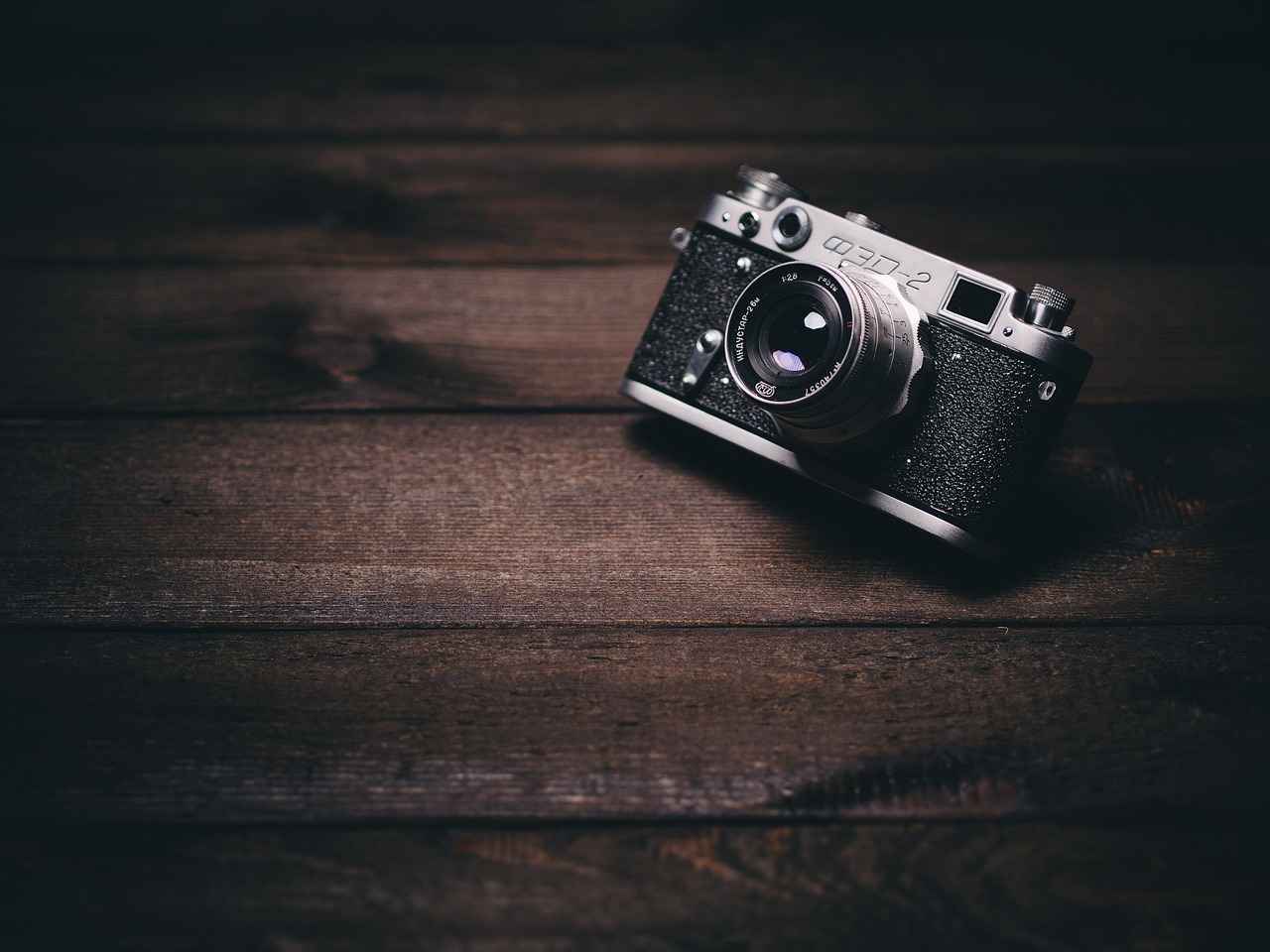
How User-Friendly Are the Interfaces?
User experience plays a crucial role in the usability of action cameras, particularly when it comes to the interfaces of Sony and GoPro. In this section, we will evaluate the ease of use of both brands, focusing on menu navigation and touchscreen responsiveness.
Sony’s latest action camera features a user-friendly interface that prioritizes intuitive navigation. The main menu is organized logically, allowing users to access settings and modes quickly. The touchscreen is responsive, providing smooth transitions between options. Users have reported that the learning curve is minimal, making it easy for both beginners and experienced users to operate the camera effectively.
GoPro has made significant strides in enhancing its user interface as well. The latest models incorporate a swipe-based navigation system that is both modern and efficient. Users can easily switch between modes and settings with a simple swipe or tap. However, some users have noted that the complexity of certain features can be overwhelming at first, especially for those new to action cameras.
Touchscreen responsiveness is vital for action cameras, especially in dynamic environments. Sony’s touchscreen is known for its quick response times, allowing users to make adjustments on the fly without lag. In contrast, GoPro’s touchscreen has received mixed reviews; while many find it responsive, others have experienced occasional delays, particularly in bright sunlight.
| Feature | Sony | GoPro |
|---|---|---|
| Menu Organization | Logical and Intuitive | Swipe-Based, Can Be Complex |
| Touchscreen Responsiveness | Fast and Smooth | Generally Responsive, Some Delays |
| User Learning Curve | Minimal | Moderate |
User reviews often highlight the importance of a seamless interface. Many Sony users appreciate the straightforward design that allows them to focus on capturing moments rather than fiddling with settings. Conversely, GoPro users frequently commend the camera’s advanced features but sometimes express frustration over the learning curve associated with the interface.
Both Sony and GoPro offer mobile applications that complement their cameras, enhancing the overall user experience. Sony’s app allows for easy remote control and file transfer, while GoPro’s app offers extensive editing tools and social sharing options. This integration is crucial for users who want to streamline their workflow from capturing to sharing.
In conclusion, while both brands offer user-friendly interfaces, Sony tends to excel in terms of simplicity and responsiveness. GoPro, on the other hand, provides a feature-rich experience that may require a bit more time to master. Ultimately, the choice between these two brands may come down to individual preferences and the specific needs of the user.
What Are the App Integration Features?
In today’s digital landscape, app integration has become a pivotal aspect of enhancing the functionality of action cameras. Both Sony and GoPro have developed mobile applications that significantly complement their camera offerings, providing users with a range of features that elevate the overall experience. This section will delve into how these apps enhance usability through editing tools, remote control capabilities, and sharing options.
Editing Tools: Enhancing Creativity
Both Sony and GoPro offer robust editing tools within their respective apps, allowing users to refine their footage with ease. Sony’s app, Imaging Edge Mobile, provides features such as trim, filter, and stabilization adjustments. Users can quickly edit their videos on the go, making it convenient to create professional-quality content without needing extensive editing software.
On the other hand, GoPro’s Quik app stands out with its automatic editing capabilities. Users can simply select their photos and videos, and the app generates a polished video complete with transitions and music. This feature is particularly appealing for those who want to share their adventures quickly without spending hours on editing.
Remote Control Capabilities: Convenience at Your Fingertips
Remote control functionality is another significant advantage provided by both brands’ apps. With the Sony app, users can operate their cameras remotely, adjusting settings such as resolution, frame rate, and zoom directly from their smartphones. This is particularly useful for capturing shots from challenging angles or when the camera is mounted in hard-to-reach places.
Similarly, the GoPro app allows users to control their cameras remotely, but it also includes a live preview feature. This means that users can see exactly what the camera is capturing in real-time, ensuring they get the perfect shot every time. This feature is invaluable for action sports enthusiasts who need to monitor their recording while in motion.
Sharing Options: Connecting with the World
In an age where sharing moments instantly is paramount, both Sony and GoPro have made it easy to share content directly from their apps. Sony’s app allows users to upload their edited videos and photos to social media platforms or cloud storage services seamlessly. The user-friendly interface ensures that even those who are not tech-savvy can navigate the sharing options with ease.
GoPro takes this a step further with its GoPro Awards program, which encourages users to share their best footage for a chance to earn rewards. This not only fosters a sense of community among GoPro users but also motivates them to capture and share high-quality content.
In conclusion, the app integration features offered by both Sony and GoPro significantly enhance the functionality of their action cameras. With powerful editing tools, convenient remote control capabilities, and seamless sharing options, users can maximize their creative potential and capture their adventures with ease. Whether you are a seasoned professional or a casual user, these apps provide valuable resources to elevate your shooting experience.
How Do Accessories and Mounts Compare?
Accessories and mounts play a pivotal role in enhancing the functionality and versatility of action cameras, allowing users to capture their adventures from unique perspectives. This section delves into the extensive range and compatibility of accessories available for both Sony and GoPro cameras, providing insights into how these tools can significantly expand the usability of these devices.
Both Sony and GoPro offer a comprehensive selection of accessories designed to enhance the user experience. These include:
- Mounts: From helmet mounts to chest harnesses, both brands provide a variety of options that allow users to securely attach their cameras to different surfaces.
- Tripods: Lightweight and portable tripods are available for both brands, enabling stable shots in various environments.
- Protective Cases: Waterproof and rugged cases protect cameras during extreme sports or underwater activities.
- Filters: Lens filters are available for both brands, enhancing color and reducing glare in challenging lighting conditions.
One of the critical factors to consider when evaluating accessories is their compatibility with different camera models. GoPro has established a vast ecosystem of mounts that are compatible across various models, making it easy for users to switch between different setups without needing to purchase new mounts. In contrast, Sony has made strides in this area, but some users may find that certain mounts are specifically designed for select models, limiting versatility.
While both brands offer similar types of accessories, there are unique options that cater to their respective camera features:
- Sony’s Live-View Remote: This accessory allows users to control their camera settings and view live footage from a distance, which is particularly useful for group activities.
- GoPro’s 3-Way Grip: This multifunctional accessory serves as a grip, extension arm, and tripod, providing flexibility for various shooting scenarios.
Utilizing accessories can greatly enhance the shooting experience:
- Increased Stability: Using mounts and tripods can help stabilize shots, reducing the risk of shaky footage.
- Creative Angles: Accessories enable users to explore creative shooting angles, capturing unique perspectives that would otherwise be difficult to achieve.
- Protection: Protective cases safeguard cameras from damage, especially in extreme conditions, ensuring longevity and reliability.
When it comes to pricing, both Sony and GoPro offer accessories at various price points. Generally, GoPro accessories tend to be slightly more expensive due to their extensive compatibility and brand recognition. However, Sony’s accessories are often competitively priced, providing good value for users who own their action cameras. It’s essential for consumers to evaluate their specific needs and budget when selecting accessories.
In summary, both Sony and GoPro provide a wide range of accessories that enhance the functionality of their action cameras. While GoPro may have the edge in terms of mount compatibility and variety, Sony offers unique accessories that cater to specific user needs. Ultimately, the choice between the two will depend on individual preferences and the specific features users are looking to enhance.
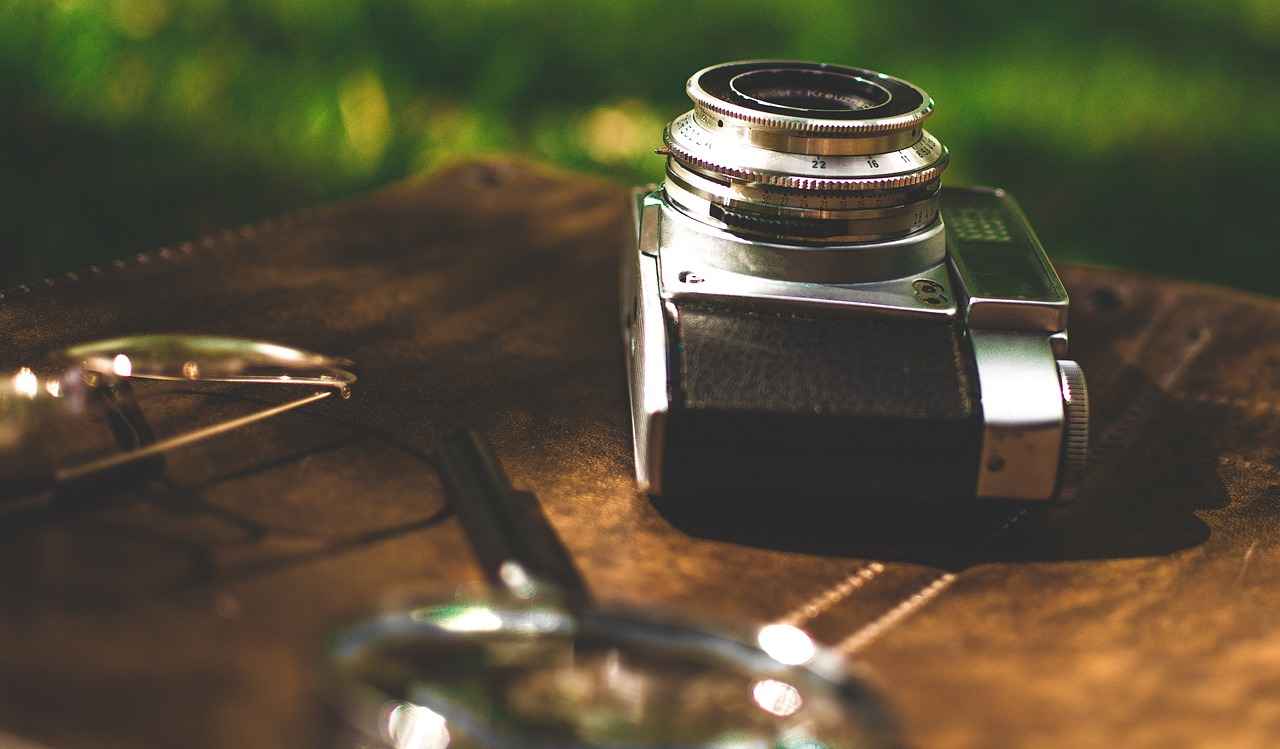
What Do Reviews Say About User Experience?
User reviews are a crucial aspect of understanding the true performance of any product, especially in the competitive world of action cameras. In this section, we will delve into what users are saying about both Sony’s latest action cam and GoPro’s offerings. By analyzing feedback, we can highlight common praises as well as complaints, providing a comprehensive view of user experiences.
Many users have praised Sony’s latest action cam for its exceptional video quality. Users frequently mention the clarity and detail captured in both bright and low-light conditions, making it a favorite for adventure seekers who often shoot in varying environments. The advanced stabilization technology has also received accolades, with users reporting smooth footage even during intense activities like mountain biking or surfing.
On the other hand, GoPro users often commend the brand for its user-friendly interface and intuitive controls. Many reviews highlight how easy it is to navigate through settings and access various features, which is particularly beneficial for those new to action cameras. Additionally, users appreciate the long battery life of GoPro models, allowing for extended shooting sessions without the need for frequent recharging.
- Common Praises for Sony:
- Stellar video quality in diverse lighting conditions.
- Highly effective stabilization technology.
- Robust build quality suitable for extreme conditions.
- Common Complaints for Sony:
- Higher price point compared to competitors.
- Occasional software glitches reported by users.
- Common Praises for GoPro:
- User-friendly interface and easy navigation.
- Excellent battery life for prolonged usage.
- Wide range of accessories and mounts available.
- Common Complaints for GoPro:
- Some users report issues with overheating during extended use.
- Video quality may not match Sony in low-light situations.
Both brands have their strengths, but user feedback often points to specific use cases that favor one over the other. For instance, adventure vloggers who prioritize video quality may lean towards Sony, while casual users looking for ease of use might prefer GoPro.
In terms of customer support, reviews suggest that both companies have made significant strides. Users report responsive service from both Sony and GoPro, which is crucial when dealing with technical issues or product inquiries. This aspect can greatly influence a buyer’s decision, especially for those investing in high-end equipment.
Overall, user reviews serve as a valuable resource for potential buyers, offering insights into the real-world performance of these action cameras. By synthesizing feedback from various users, it becomes evident that both Sony and GoPro have carved out their niches within the action camera market. Understanding these perspectives can help prospective buyers make informed decisions based on their specific needs and preferences.

How Do Pricing and Value for Money Compare?
When it comes to purchasing an action camera, price is undeniably a significant factor that influences consumer decisions. In this section, we will delve into the pricing of Sony’s and GoPro’s latest models, comparing their value based on features and performance. Understanding the cost in relation to what each camera offers can help potential buyers make informed choices.
As of 2025, the latest action camera from Sony is priced at $499, while GoPro’s newest model retails for $399. At first glance, GoPro appears to offer a more budget-friendly option. However, it is essential to consider the features and performance each model provides to determine their true value.
Both brands are known for their innovative technology, and their pricing often reflects the features included. Sony’s latest model offers:
- 4K video recording with advanced image stabilization
- Super slow-motion capabilities at 240fps
- Enhanced low-light performance with a larger sensor
On the other hand, GoPro’s model features:
- 5K video recording for ultra-high definition
- Improved battery life
- New voice control features
While GoPro’s offering is cheaper, the inclusion of higher resolution video and enhanced low-light capabilities in Sony’s model may justify its higher price tag for users who prioritize these features.
When evaluating value, performance is crucial. Sony’s camera is renowned for its superior stabilization technology, which is vital for capturing smooth footage during fast-paced activities. In contrast, GoPro’s latest model has made significant strides in battery longevity and user-friendly interface, making it an attractive choice for casual users.
Brand reputation also plays a role in pricing. Sony has established itself as a leader in imaging technology, often commanding higher prices due to its perceived quality and innovation. GoPro, while popular among adventure enthusiasts, is often viewed as a more accessible brand. This perception can affect consumer willingness to invest in a more expensive model.
Potential buyers should also consider seasonal discounts or promotions. Both brands frequently offer deals during holidays or special events, which can significantly reduce the overall cost. Additionally, trade-in programs may allow consumers to upgrade their current models at a lower price point.
Customer feedback is essential for gauging value for money. Reviews often highlight aspects such as durability, ease of use, and overall satisfaction. Many users of Sony’s model praise its video quality and stabilization, while GoPro users often commend its portability and battery life. Analyzing these reviews can provide insights into whether the price aligns with user expectations and experiences.
In conclusion, while GoPro’s model is less expensive, Sony’s higher price may be justified by its advanced features and performance capabilities. Ultimately, the decision will depend on individual needs and how much value a user places on specific features.
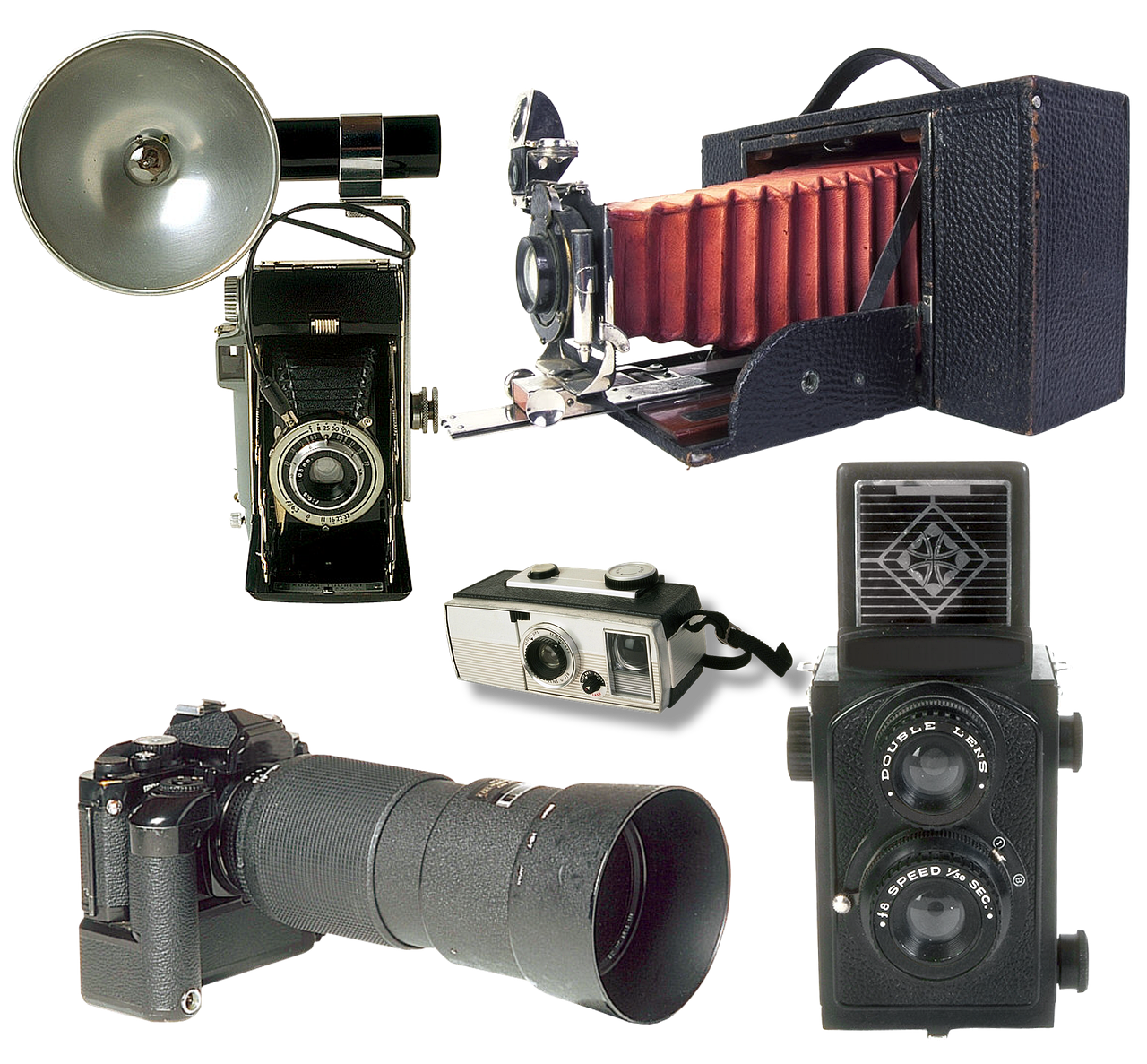
What Are the Future Trends in Action Cameras?
As technology continues to advance at a rapid pace, the action camera industry is also experiencing significant transformations. Emerging trends are reshaping how these devices are designed, used, and integrated into our daily lives. This section will delve into the future trends of action cameras, focusing on AI integration and enhanced connectivity features, and how they are likely to influence upcoming models from leading brands.
Artificial Intelligence (AI) is becoming a game-changer in the realm of action cameras. With AI capabilities, cameras can now offer features such as:
- Smart Scene Recognition: Automatically adjusting settings based on the environment.
- Real-Time Video Analysis: Enhancing video quality by optimizing frame rates and stabilization on the fly.
- Automated Editing: Utilizing algorithms to create highlight reels or edit footage based on user preferences.
These features not only simplify the user experience but also enhance the quality of the content produced, making it more accessible to amateur filmmakers and adventurers alike.
As action cameras become increasingly interconnected, enhanced connectivity features are set to play a pivotal role. Future models may include:
- Wi-Fi 6 and Bluetooth 5.0: Faster and more reliable connections for seamless file transfers and remote control.
- Cloud Integration: Direct uploads to cloud services for automatic backup and easy sharing across platforms.
- Live Streaming Capabilities: Enhanced options for broadcasting live events directly from the camera to social media.
These advancements will not only improve user convenience but also expand the creative possibilities for content creators.
The future of action cameras is not just about improved specifications; it’s also about enhancing the overall user experience. With the integration of AI and advanced connectivity, users can expect:
- Intuitive Interfaces: Smarter menus that adapt to user preferences and habits.
- Voice Control: Hands-free operation that allows users to capture moments without needing to physically interact with the camera.
- Augmented Reality (AR) Features: Overlaying information or effects in real-time, enhancing the filming experience.
These innovations will make action cameras more user-friendly, catering to both seasoned professionals and newcomers.
As environmental concerns grow, manufacturers are likely to prioritize sustainability in their designs. Future action cameras may feature:
- Eco-Friendly Materials: Utilizing recycled plastics and sustainable components.
- Energy Efficiency: Improved battery life and solar charging options.
- Repairability: Designs that allow for easy repairs and upgrades rather than complete replacements.
By focusing on sustainability, brands can appeal to environmentally conscious consumers while contributing positively to the planet.
In summary, the future of action cameras is bright, with exciting trends such as AI integration and enhanced connectivity leading the charge. As these technologies evolve, they will not only improve the functionality and performance of action cameras but also enhance the user experience and promote sustainability in the industry.
Frequently Asked Questions
- What is the main difference in video quality between Sony’s and GoPro’s latest action cams?
The video quality varies significantly, with Sony often excelling in low-light conditions and color accuracy, while GoPro tends to shine with higher frame rates and 5K recording capabilities. It’s like comparing a high-resolution painting to a vibrant street mural; both have their unique appeal!
- How does stabilization technology work in these cameras?
Both brands utilize advanced stabilization technologies, such as Sony’s Optical SteadyShot and GoPro’s HyperSmooth. Think of it as a magic carpet ride; they both aim to keep your footage smooth and steady, even during the wildest adventures!
- Which camera has better battery life for extended use?
Battery life can be a game-changer! Generally, GoPro models have shown improvements in longevity, allowing for longer recording sessions. However, it’s always best to check specific model reviews since battery performance can vary based on usage.
- Are the user interfaces easy to navigate?
Absolutely! Both Sony and GoPro prioritize user-friendly designs. Sony’s touchscreen interface is intuitive, while GoPro’s menu is straightforward, making it easy for anyone to jump right in and start filming their adventures!
- What accessories are available for these cameras?
Both brands offer a wide range of accessories and mounts. From helmet mounts to waterproof cases, you’ll find plenty of options to enhance your filming experience. It’s like having a toolbox full of gadgets ready for any action-packed scenario!
